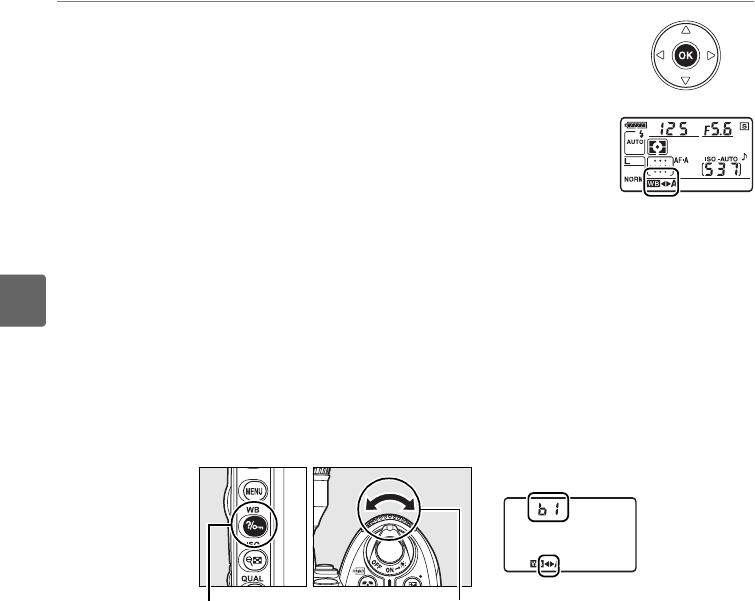
98
t
3 Press J.
Press J to save settings and return to the shooting menu.
If
white balance has been fine-tuned on the A-B axis, a E icon
will be displayed in the control panel.
❚❚ The WB Button
At settings other than K (Choose color temp.) and L (Preset manual), the WB
button can be used to fine-tune white balance on the amber (A)–blue (B) axis (pg. 97;
to fine-tune white balance when K or L is selected, use the shooting menu as
described on page 97).
Six settings in both directions are available; each increment
is equivalent to about 5 mired (see below).
Press the WB button and rotate the sub-
command dial until the desired value is displayed in the control panel.
Rotating the
sub-command dial to the left increases the amount of amber (A).
Rotating the sub-
command dial to the right increases the amount of blue (B).
At settings other than 0,
a E icon appears in the control panel.
A
“Mired”
Any given change in color temperature produces a greater difference in color at low color
temperatures than it would at higher color temperatures.
For example, a change of 1000 K
produces a much greater change in color at 3000 K than at 6000 K.
Mired, calculated by
multiplying the inverse of the color temperature by 10
6
, is a measure of color temperature that
takes such variation into account, and as such is the unit used in color-temperature
compensation filters.
E.g.:
• 4000 K–3000 K (a difference of 1000 K)=83 mired
• 7000 K–6000 K (a difference of 1000 K)=24 mired
WB button Sub-command dial Control panel


















